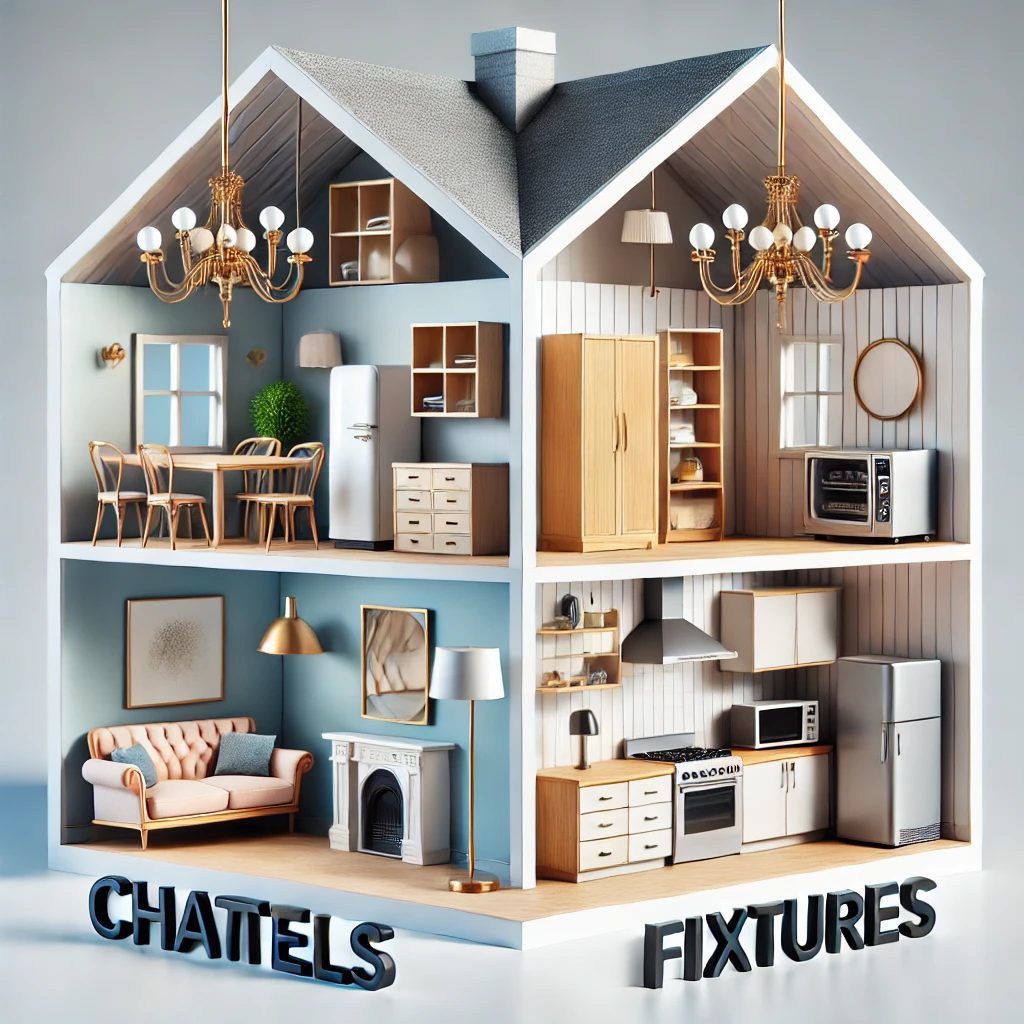When buying or selling a property, one of the most overlooked yet critical aspects of the transaction is understanding the difference between fixtures and chattels. Knowing how these terms impact your sales agreement can help prevent disputes and ensure a smoother process for both buyers and sellers. This guide will explain what fixtures and chattels are, their significance in real estate, and what to include in your sales agreement to avoid confusion.
What Are Chattels?
Chattels refer to personal property that is not attached to the real estate and can be moved easily. These items are typically not included in the sale of a property unless explicitly stated in the sales agreement. Examples of chattels include furniture, free-standing appliances, and decorative items.
In legal terms, chattels are considered “movable” assets, which differentiates them from fixtures that are attached to the property. Buyers should carefully review the agreement to ensure any desired chattels are included in the sale, and sellers should clarify which chattels they intend to remove.
What Is a Fixture in Real Estate?
A fixture is any item that is permanently attached to the property, making it a part of the real estate. Fixtures are generally included in the sale unless otherwise specified. Examples of fixtures include:
- Built-in shelves
- Light fixtures
- Plumbing installations
- Built-in appliances, such as dishwashers or ovens
Fixtures are considered immovable, and their inclusion or exclusion must be explicitly mentioned in the sales agreement to avoid disputes. For instance, if a seller plans to take a chandelier, it must be listed as an exclusion in the agreement.
Are Appliances Chattels or Fixtures?
One of the most common questions in real estate is, “Are appliances chattels or fixtures?” The answer depends on whether the appliance is free-standing or built-in:
- Free-standing appliances, such as refrigerators, washing machines, and microwaves, are considered chattels. They are not automatically included in the sale unless specified.
- Built-in appliances, such as wall ovens or built-in microwaves, are considered fixtures. These are generally included in the sale unless excluded in the agreement.
Sellers should clearly specify which appliances are included in the sale, and buyers should ensure these details are documented in the agreement to avoid misunderstandings.
Why the Distinction Matters
The distinction between fixtures and chattels is crucial in real estate transactions because it determines what is included in the sale of the property. Disputes often arise when buyers assume certain items are included, while sellers intend to remove them. Clear communication and proper documentation can help avoid such conflicts.
For example, a buyer might expect a garden shed (considered a fixture) to remain on the property, but the seller might plan to take it. Similarly, the seller might leave behind an old sofa (a chattel) that the buyer does not want. Addressing these details in the sales agreement ensures both parties are on the same page.
How to Address Fixtures and Chattels in a Sales Agreement
When drafting or reviewing a sales agreement, both buyers and sellers should pay close attention to the section that addresses fixtures and chattels. Here are some steps to follow:
1. Create a Detailed List
- For Sellers: Create a list of chattels you plan to take with you and fixtures you intend to exclude from the sale. For instance, if you plan to remove a specific light fixture or a garden feature, list it explicitly.
- For Buyers: List the chattels you expect to remain with the property, such as free-standing appliances or outdoor furniture.
2. Use Clear Language
Ensure the agreement clearly states whether specific items are included or excluded. Avoid vague terms and use precise descriptions to avoid ambiguity.
3. Inspect the Property
Buyers should inspect the property thoroughly to identify which items are included or excluded. Sellers should point out any exclusions during this process.
4. Negotiate Items
Both parties should discuss and negotiate any items in question before finalizing the agreement. For example, if the buyer wants a specific appliance to remain, this should be agreed upon and documented.
5. Document Everything
Ensure all inclusions and exclusions are documented in the sales agreement. This serves as a legally binding record and helps resolve potential disputes.
Examples of Common Issues and Solutions
Issue 1: Light Fixtures
Scenario: A buyer assumes all light fixtures are included, but the seller plans to take a specific chandelier.
Solution: The sales agreement should explicitly state whether the chandelier is included or excluded.
Issue 2: Appliances
Scenario: A buyer expects the refrigerator to remain, but the seller considers it a chattel and plans to take it.
Solution: The agreement should specify whether the refrigerator is included in the sale.
Issue 3: Outdoor Items
Scenario: A seller leaves behind a garden bench, which the buyer does not want.
Solution: The agreement should clarify which outdoor items are included and whether the buyer can request their removal.
Legal Implications
Failing to address fixtures and chattels properly in a sales agreement can lead to legal disputes. If a disagreement arises after the sale, the courts will often rely on the agreement’s wording to determine ownership. In the absence of clear documentation, the court may apply the “purpose and permanence test” to decide whether an item is a chattel or a fixture.
Conclusion
Understanding the difference between fixtures and chattels is essential for a smooth real estate transaction. Whether you are buying or selling, take the time to review and address these details in the sales agreement. Clearly specifying inclusions and exclusions not only prevents disputes but also ensures both parties have a clear understanding of the transaction.
If you’re ever unsure about whether an item is a fixture or a chattel—or how to handle such items in your agreement—consulting a real estate professional or legal expert can provide valuable guidance. By addressing these details upfront, you can enjoy a seamless real estate experience.
